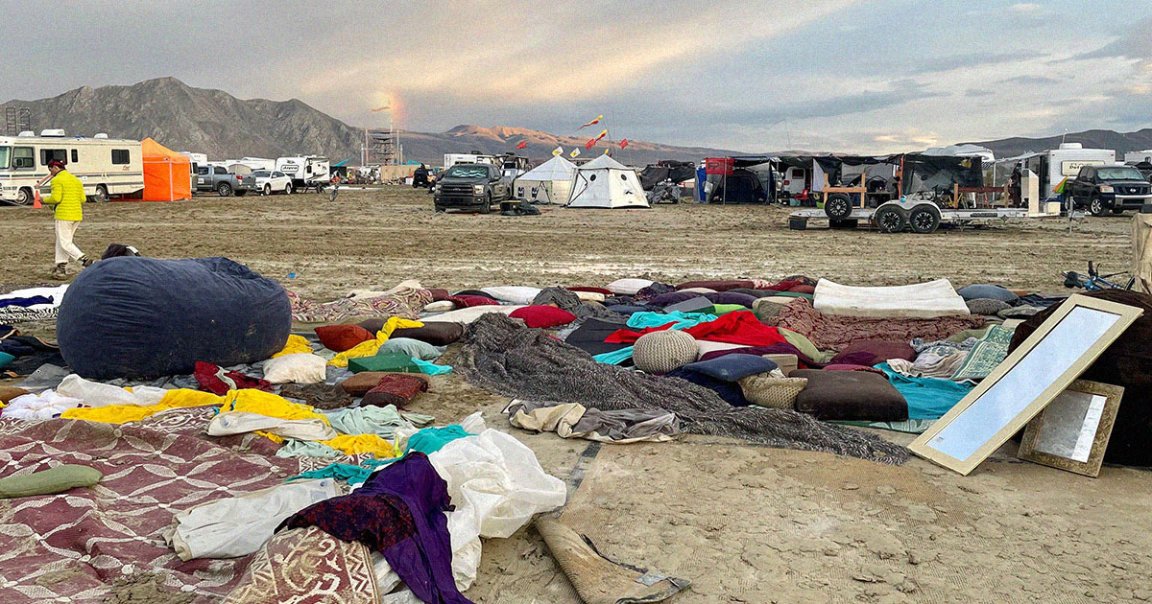
Burning Trash
This year’s Burning Man in a remote part of the Nevada desert was marked by an extremely rare torrential rain, turning the drug-fuelled event into a mud-covered mess.
The mud — technically hydrated desert dust — proved to be a major hindrance for the around 80,000 attendees, forcing them to shelter in place and wait out the rain. Even trucks were helpless against the deep and sticky muck.
While the exodus on Monday allowed many to get back to civilization in one piece, countless tents, vehicles, and trash were left behind, as NBC News reports, marring an event that prides itself in its track record of returning the surrounding area to its natural state (something organizers are required to do with their special recreation permit anyway.)
Critics have long accused Burning Man organizers of greenwashing the event — and this year, that criticism has been laid bare.
Picking Up the Pieces
Organizers and attendees started returning to the site on Wednesday to start cleaning up, a process that can take weeks, per NBC.
“After exodus, the Burning Man team has three weeks where they grid out the entire event area and pick up all items and trash,” Burning Man spokesperson Rita Henderson told NBC. “In addition, they clean along the side of the county highways leading to and from the event.”
Despite those efforts, many environmental groups have long pointed out the event’s considerable carbon footprint. According to estimates, Burning Man releases some 100,000 tons of carbon dioxide, the equivalent of the emissions created to power 19,000 homes for a year.
This year, climate change activists created a blockade on the one road in and out of the festival site, but tribal police eventually shut it down.
Then there’s the local fauna and flora, with biologists warning of native brush being trampled. The eggs of small crustaceans, which hatch after rainfall, could also be destroyed, NBC reports.
At the end of the day, even if Burners pick up all their trash, the environmental damage caused by the massive festival is still palpable.
Looking ahead, Burning Man wants to become “carbon negative, sustainably manage waste, and be ecologically regenerative by 2030.” But clearly, getting there will be anything but easy and require some drastic changes.
More on Burning Man: Burning Man Descends Into Chaos as Attendees Told to “Shelter in Place”